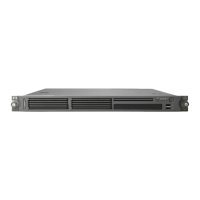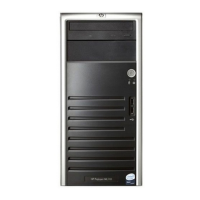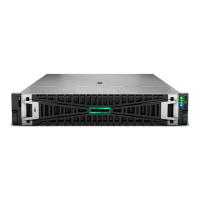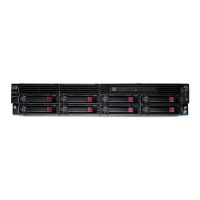Key factors of power distribution in high-density racks
Power distribution units (PDUs) are highly recommended for high-density systems that place heavy
loading demands on the facility alternating current (AC) power bus. PDUs allow IT infrastructure
designers to:
• Use segmented circuits to improve serviceability and enable sequential startup
• Achieve balanced loading between dual power buses
• Support redundant operation of equipment with redundant power supplies
A variety of PDU types are available to meet different needs. Key considerations for choosing an
appropriate PDU include:
• Level and phase of power to be distributed
• Connector type
• Estimated power consumption of active components in the rack
• Physical space available for PDU mounting
• Special requirements or features such as circuit monitoring
Power level and phase
PDUs are designed to distribute a specific amount of current at either a low-line (100 – 127 VAC) or
high-line (200 – 240 VAC) voltage range, depending on which level is supplied to the rack. Most HP
server equipment features auto-sensing input circuitry that automatically detects and adjusts to the
input voltage range.
High-line voltage is the favored choice for electrical equipment requiring high power consumption. As
determined by Ohm’s law [voltage (E) x current (I) = power (W)], higher voltage allows power
supplies to produce the necessary power with less AC current. For example, a power supply that is
required to produce 400 watts of power for a server will need to draw 3.3 amperes if operated with
120 VAC. The same power supply operating at 208VAC only requires 1.9 amperes to produce
400 watts—over a 30 percent reduction of AC current. High-line operation is generally more
economical because it allows power supplies to create less heat (thereby reducing the cooling
requirements). High-line voltage also can enhance reliability by extending equipment meantime-
between-failure (MBF) periods. Note that some power supplies require high-line voltage to operate at
maximum potential.
High-line voltage (208 VAC in North America, 200 VAC in Japan, 220 VAC elsewhere) is becoming
commonly available in data centers. High-line voltage can be distributed as single or three-phase
power. With single-phase power, voltage reaches its maximum and minimum 120 times a second (at
60 Hz). Three-phase power uses three cycles 120 degrees out of phase to provide a more constant
voltage to the load (Figure 1). The efficiency of three-phase power allows the use of smaller circuit
sizes (smaller-gauge conductors) to distribute the same amount of AC power.
Figure 1. Comparison of single- and three-Phase AC
Single-Phase AC
Three-Phase AC

